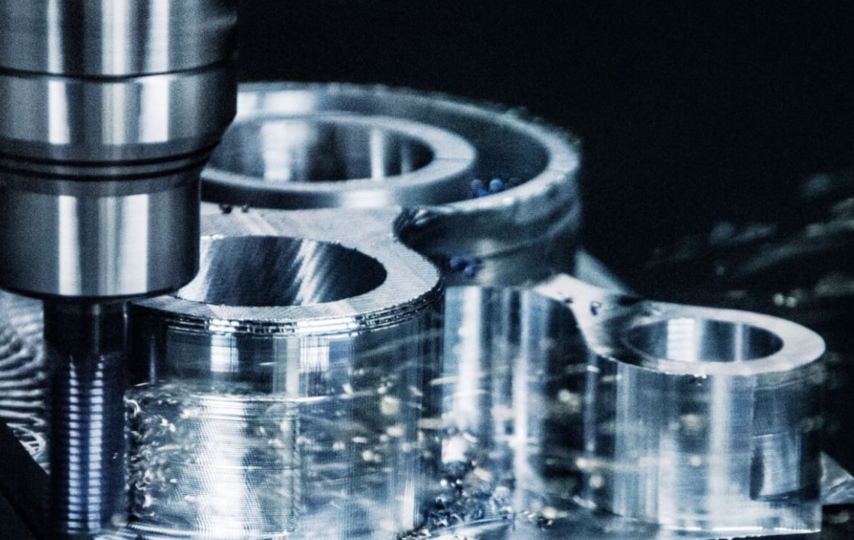Electrochemical machining (ECM) is a cutting-edge, highly specialized process used in precision production. Unlike standard machining technologies, ECM depends on controlled electrochemical reactions to deliver unrivaled material removal precision. This novel method uses a cathode tool and an anode workpiece immersed in an electrolyte to dissolve material via carefully controlled electrochemical reactions.
ECM is renowned for its ability to manufacture sophisticated components with complex geometries while providing advantages in terms of precision, surface polish, and tool wear. The ecm machining has found uses in the aerospace, medical, and automotive sectors, among others, as industries require ever-increasing levels of precision.
Different Types Of Machining Operations
Machining procedures are critical to modern manufacturing processes, transforming raw materials into precise components utilized in a variety of sectors. This article delves into various machining techniques, highlighting their distinct qualities, applications, and contributions to the manufacturing scene.
Conventional Machining Process
The classic machining processes are machining processes. To achieve the machining activity, these procedures employ physical tools such as cutting blades and drill bits. Conventional machining processes are classified as follows:
- Turning
Turning is a machining operation that includes rotating a workpiece while removing material with a cutting tool to obtain the desired form. It is frequently applied to cylindrical components. In industries such as automotive, aerospace, and general manufacturing, turning is critical for making shafts, rods, and other cylindrical parts.
- Milling
Milling procedures remove material from a workpiece by spinning multi-point cutting tools, resulting in complex shapes and features. It can be done in three directions (up, down, and sideways), which opens up a vast range of possibilities. Milling is extensively used in industries such as automotive, electronics, and mold-making to create gears, slots, and complex components.
- Drilling
Drilling is the process of drilling holes in a workpiece with a spinning cutting tool. A drill bit is a tool that employs axial force to puncture material. Drilling is required in the production of holes for fasteners, pipes, and electrical components used in industries such as building, aviation, and electronics.
- Grinding
Grinding is a type of machining that is used in the industrial industry to obtain exact surface finishes and dimensional accuracy. It includes removing material from a workpiece by abrasive cutting, generally with a grinding wheel or abrasive belt. This method is critical for generating fine finishes on metals, ceramics, and other materials while maintaining tight tolerances for a wide range of industrial applications.
- Electrical Discharge Machining (EDM)
Electrical discharge machining (EDM) is a machining procedure that shapes and forms workpieces using electrical discharges. EDM involves the generation of a sequence of controlled electrical sparks between an electrode and the workpiece, which erodes material to form complex shapes and exact details. This non-contact, thermal machining technology is particularly effective for hard and electrically conductive materials, providing excellent accuracy in the fabrication of complicated components.
- Waterjet Cutting
Waterjet cutting is a method of cutting materials that uses a high-pressure spray of water (often combined with abrasive particles). It is adaptable to a wide range of materials. Waterjet cutting is used in industries such as aerospace, automotive, and architecture to cut heat-sensitive materials.
- Ultrasonic Machining
Ultrasonic Machining: To remove material, ultrasonic vibrations are coupled with abrasive slurry. It works well with hard and fragile materials. Ceramics, semiconductors, and precision components for the electronics and medical industries are all manufactured using ultrasonic machining.
Non-conventional Machining Process
Non-conventional machining processes, often known as unconventional or advanced machining, play an important role in manufacturing industries by providing alternatives to typical cutting processes. These approaches are particularly useful for materials that are difficult to machine using traditional methods.
- Electrical Discharge Machining (EDM)
DM is a non-contact machining technology that removes material from a workpiece using electrical discharges. It works well with complicated shapes and hard materials. EDM is widely utilized in the aerospace, die and mold production, and medical device manufacturing industries.
- Laser Beam Machining (LBM)
LBM uses a focused laser beam to melt, vaporize, or blow away material to achieve accurate cuts and forms. LBM is used in the aerospace sector, electronics production, and for precise material cutting.
- Ultrasonic Machining (USM)
Ultrasonic vibrations mixed with abrasive slurry are used in USM to remove material. Precision machining of fragile materials like ceramics and semiconductors is done with USM. To remove material from a workpiece, ultrasonic machining employs a high-frequency vibrating tool. There is abrasive material present between the tool and the workpiece. To make a fine abrasive paste, the abrasive substance is combined with water.
- Chemical Machining
Chemical machining removes material from a workpiece by utilizing chemical etchants to create complicated shapes. In the aerospace sector, it is commonly utilized for complex and lightweight components. Etching is another name for this method. The substance is removed by immersing the workpiece in a chemical agent. The workpiece is masked, but the portions to be removed are not.
- Electrochemical Machining (ECM)
ECM removes material with great precision by using an electrolyte solution and an electrical current. ECM is used for elaborate and sophisticated parts in the aerospace, medical, and automotive industries. This method is not affected by surface hardness or machinability. As a result, it can easily machine hard materials. It is also useful for machining materials that are difficult to machine.
- Ion Beam Machining (IBM)
Ion Beam Machining (IBM) is a precision machining procedure that removes material from a workpiece by using accelerated ions. The ion beam, which is commonly made up of gas ions, bombards the surface of the workpiece, generating sputtering and material removal. IBM is used in high-precision industries such as semiconductor production, optics, and microelectronics because it provides superior control over material removal and surface finishes.
- Abrasive Flow Machining (AFM)
Abrasive Flow Machining (AFM) is a unique machining process that utilizes a viscous, abrasive-laden medium to polish, deburr, and shape intricate internal passages in workpieces. The media, propelled by hydraulic pressure, flows through the passages, removing imperfections and achieving the desired surface finish. AFM is particularly effective for complex and challenging-to-reach geometries, making it valuable in industries such as aerospace, automotive, and medical manufacturing.
Summary
The vast range of machining operations is critical in processing raw materials into finished components across a wide range of industries. Understanding the advantages and applications of each machining process is critical for manufacturers looking for the best solutions for their individual production needs. Non-traditional machining technologies have transformed the production landscape by providing creative solutions for difficult materials and complex geometries.








